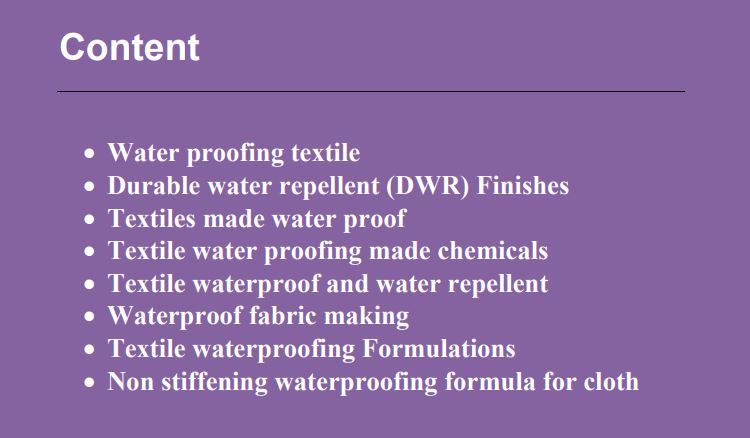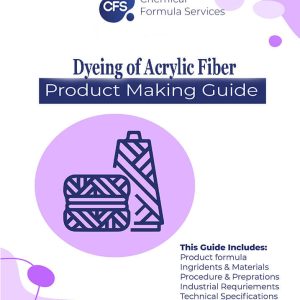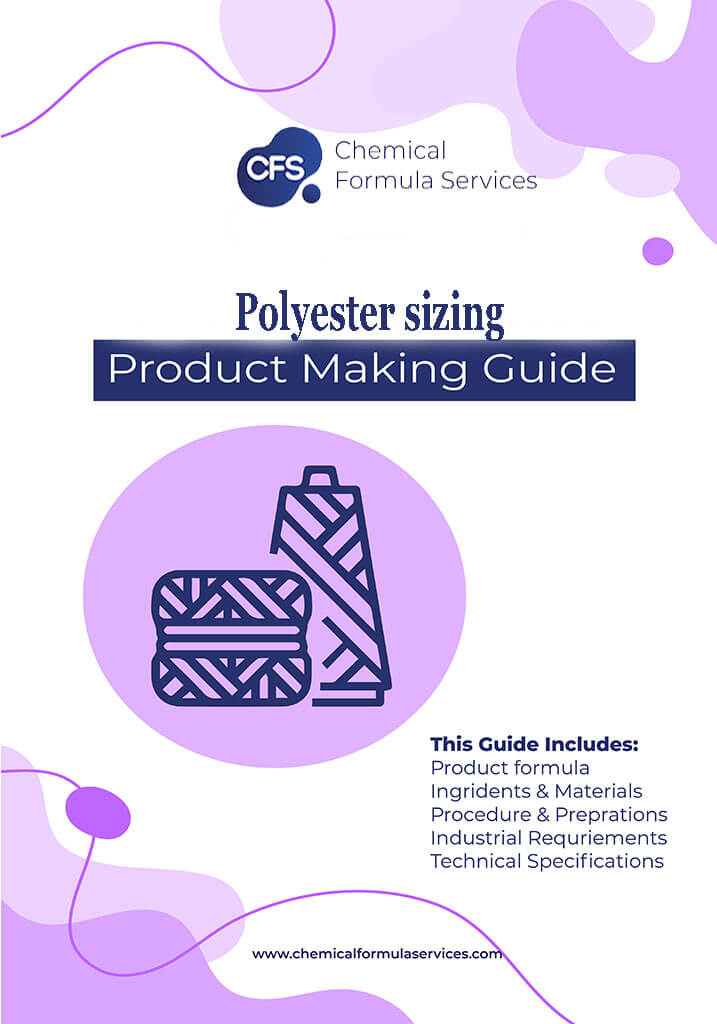Textile waterproofing Formulation
$ 70
Description
Textile waterproofing is the process of treating textiles or fabrics to make them resistant to the penetration of water by this formulation. This treatment is commonly applied to various textiles, such as clothing, outdoor gear, tents, backpacks, and other items that need to withstand wet weather conditions.
There are several methods of textile waterproofing, each with its own advantages and applications:
- Durable Water Repellent (DWR) Coatings: DWR is a popular treatment that creates a water-resistant surface on the fabric. It works by reducing the surface tension of water droplets, causing them to bead up and roll off the fabric instead of being absorbed. DWR coatings are often used on outdoor clothing and equipment.
- Laminates and Membranes: These are thin layers of waterproof and breathable materials that are bonded to the fabric. The most common membrane used is Gore-Tex, which allows water vapor to escape while blocking liquid water from entering.
- Waxing: This traditional method involves applying wax, such as beeswax or paraffin, onto the fabric. The wax creates a barrier that repels water. Although effective, waxing can make the fabric stiff and less breathable.
- Polyurethane Coatings: Polyurethane coatings are applied as a liquid and then cured to form a waterproof layer. This method is often used in rainwear and other waterproof garments.
- Silicone Treatments: Silicone-based waterproofing treatments create a water-repellent surface by bonding with the fabric’s fibers. They are commonly used on lightweight outdoor gear and tents.
- Nanotechnology: Some advanced textile waterproofing treatment formulation use nanotechnology to create extremely fine water-resistant coatings. These nanocoatings can provide effective water repellency without compromising breathability or fabric flexibility.
The waterproofing treatments can enhance a fabric’s ability to repel water, no treatment can make a textile 100% waterproof indefinitely. Over time and with wear, the effectiveness of waterproofing treatments may diminish, and re-treatment might be necessary. Regular maintenance, proper washing, and following the our formulator’s care instructions can help prolong the effectiveness of waterproofed textiles.









